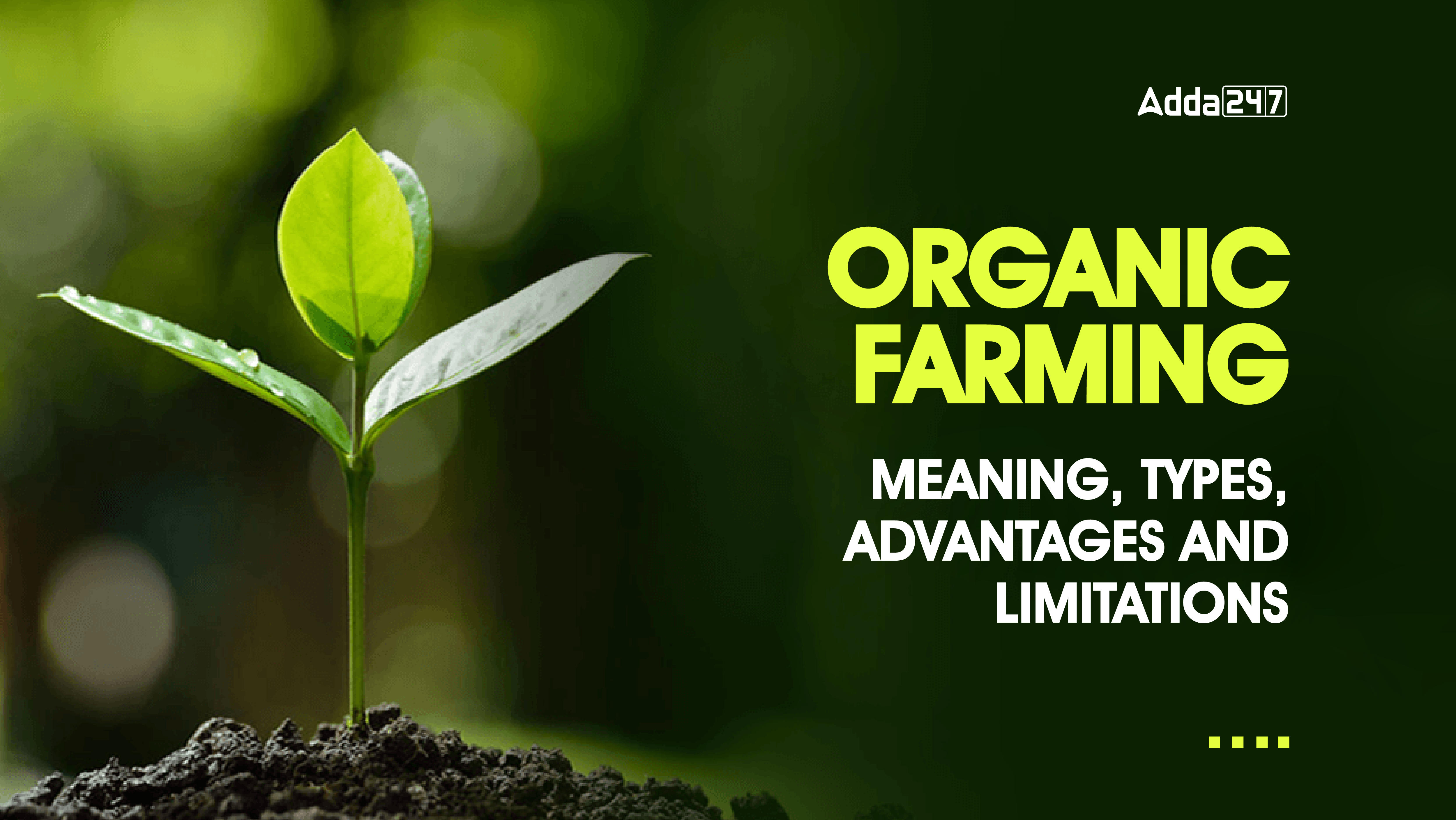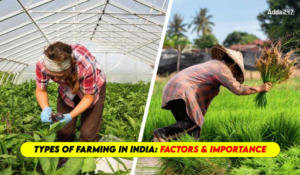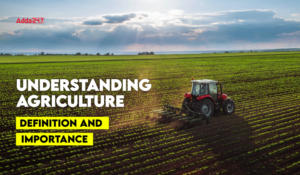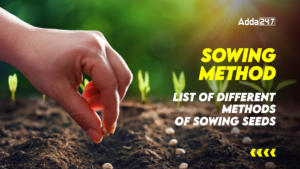Table of Contents
Organic and eco-friendly agriculture focuses on farming in a way that is good for the environment and our health. Organic farming means growing all kinds of food—like grains, meat, dairy, eggs, cotton, flowers, and processed foods—without using synthetic chemicals or genetically modified organisms.
Eco-friendly agriculture takes these ideas further by using practices that protect the environment and conserve resources. This includes techniques like rotating crops, using cover crops, and minimizing tillage to keep the soil in good shape, save water, and support wildlife.
Together, organic and eco-friendly farming aims to build a more sustainable and healthy food system that benefits both people and the planet. Let’s learn in detail now.
Need & scope of organic farming
The need for organic farming arises from growing concerns about environmental degradation and health risks associated with synthetic chemicals. Its scope extends to sustainable practices that enhance soil health, protect biodiversity, and ensure a resilient food system.
- Increase in awareness and health consciousness
- Global consumers are increasingly looking for organic food, which is considered safe, and hazard-free.
- The global prices of organic food are more lucrative and remunerative.
- The potential of organic farming is signified by the fact that the farm sector has abundant organic nutrient resources like livestock, water, crop residue, aquatic weeds, forest litter, urban, and rural solid wastes and agro-industries, and bio-products.
- India offers tremendous scope for organic farming as it has local market potential for organic products.
Organic Farming: Core Concepts
Organic farming is a production system where agricultural products—such as grains, meat, dairy, eggs, fibers like cotton, flowers, and processed foods—are grown without synthetic chemicals, genetically modified organisms, or artificial additives. The core concepts of organic farming include:
- Natural Inputs: Organic farming relies on natural methods and inputs, such as compost, organic fertilizers, and biological pest control, to enhance soil fertility and plant health.
- Soil Health: Emphasis is placed on maintaining and improving soil health through practices like crop rotation, cover cropping, and reduced tillage.
- Biodiversity: Organic farming supports a diverse ecosystem by encouraging a variety of plants, animals, and microorganisms to thrive on the farm.
- Sustainability: The goal is to create a sustainable farming system that minimizes environmental impact and conserves resources.
Principles of Organic Agriculture
The International Federation of Organic Agriculture Movements (IFOAM) established key principles in 1972 to guide organic farming practices. These principles focus on producing high-quality food while respecting the environment and social systems. Here are the core principles:
- High-Quality and Sufficient Food: Produce food that is both high in quality and available in adequate amounts.
- Harmonious Interaction with Nature: Work in a way that positively interacts with natural systems and cycles.
- Consideration of Social and Ecological Impact: Assess the broader social and environmental effects of organic farming and processing.
- Enhancing Biological Cycles: Support and strengthen biological cycles within the farming system, including microorganisms, soil life, plants, and animals.
- Soil Fertility: Maintain and improve the long-term fertility of soils.
- Genetic Diversity: Protect and promote the genetic diversity of plants and animals and safeguard wildlife habitats.
- Water Management: Use water resources responsibly and care for all life within these resources.
- Renewable Resources: Rely on renewable resources and local production systems whenever possible.
- Animal Welfare: Ensure livestock have living conditions that respect their natural behaviors and needs.
- Pollution Reduction: Minimize all forms of pollution.
- Quality of Life: Provide fair working conditions and a good quality of life for everyone involved in organic farming and processing.
- Social and Ecological Responsibility: Aim for a production, processing, and distribution chain that is socially fair and ecologically responsible.
Types of Organic Farming
Organic farming can be broadly categorized into two main types:
Pure Organic Farming
- Pure organic farming involves the complete avoidance of synthetic chemicals.
- In this method, all fertilizers and pesticides used are derived from natural sources, such as bone meal or blood meal.
- This approach focuses on maintaining ecological balance by using only natural inputs to enhance soil fertility and manage pests.
Integrated Organic Farming
- Integrated organic farming combines organic practices with modern techniques to address ecological requirements and demands.
- This approach includes integrating pest management and nutrient management strategies while adhering to organic principles.
- It aims to optimize farm productivity and sustainability by combining the strengths of organic methods with practical solutions for common farming challenges.
Advantages of Organic Farming
Organic farming offers several benefits that make it a preferred choice for many consumers and farmers. Here are some key advantages:
- Nutritional Benefits: Organic farming improves soil health, which often results in food with higher mineral content, making it nutritionally superior.
- Chemical-Free: Organic products are free from harmful chemicals like pesticides, fungicides, and herbicides, ensuring safer food.
- Better Taste: Many people find that organic food tastes better due to its natural growing conditions.
- Longer Shelf Life: Organic foods can be stored for longer periods without losing quality, which reduces waste.
- Disease and Pest Resistance: Healthier plants grown organically are more resistant to diseases and pests, reducing the need for chemical interventions.
- Weed Competitiveness: Healthier crops grown organically are better at competing with weeds, minimizing the need for weed control.
- Lower Input Costs: Organic farming typically avoids costly chemicals, with nutrients and soil fertility being enhanced naturally on the farm.
- Drought Resistance: Organic farming practices often improve soil structure and water retention, making crops more resilient to drought conditions.
- Increased Profitability: Organic produce often commands higher prices in the market due to its perceived greater value, which can lead to increased profitability for farmers.
Disadvantages of Organic Farming
While organic farming has numerous benefits, it also comes with certain challenges. Here are some of the main disadvantages:
- Lower Productivity: Organic farming often results in lower productivity compared to conventional methods. This is due to the generally lower levels of nutrients used and the limited use of synthetic fertilizers and pesticides.
- Labor-Intensive: Organic farming typically requires more labor, especially for tasks such as weed control and pest management. This can increase the overall cost and effort involved in farming.
- Skill Requirements: Organic farming demands a high level of skill and knowledge. Farmers need to be adept at choosing and implementing alternative methods for pest control and other management practices.
- Management Complexity: Managing an organic farm can be more complex and less convenient compared to conventional farming methods. For example, applying organic fertilizers and managing soil health can be more time-consuming than using synthetic fertilizers.
Synonyms of Organic Farming
Organic farming is known by various other terms, each highlighting different aspects of its approach to agriculture. Here are some common synonyms and related terms:
- Eco-Farming: This term emphasizes farming practices that are aligned with the ecosystem. It focuses on maintaining the health of soil and plants in a way that is consistent with natural processes. The principle of “feed the soil, not the plant” is central to eco-farming, promoting the idea that healthy soil will naturally support healthy plants.
- Biological Farming: This term highlights the relationship between farming and biological diversity. It emphasizes practices that support a diverse range of organisms in the soil and surrounding environment, aiming to create a balanced and resilient agricultural system.
- Biodynamic Farming: Biodynamic farming is a specific type of organic farming that integrates biological and ecological principles with a focus on sustainability. It involves practices that are both biologically organic and ecologically sound, often incorporating holistic approaches to farm management and soil fertility.
- Macrobiotic Agriculture: While less commonly used, this term refers to farming practices that emphasize balance and harmony with natural processes. It includes principles of organic farming but may also focus on broader holistic and lifestyle aspects.
Eco-Friendly Agriculture: Concepts and Principles
Eco-friendly agriculture, also known as ecological farming, focuses on integrating farming practices with ecological principles to support a balanced and sustainable environment. Key concepts include:
- Ecosystem Integration: Eco-friendly farming aligns farming practices with natural ecosystems, aiming to enhance ecological balance and reduce environmental impact.
- Soil and Plant Health: This approach maintains soil health through natural processes and minimizes the need for artificial inputs. The principle of “feed the soil, not the plant” is central, emphasizing that healthy soil supports healthy plants.
- Resource Conservation: Emphasis is placed on conserving resources such as water and energy, and using renewable resources wherever possible.
- Biodiversity: Promotes a diverse range of plants and animals on the farm to create a resilient and self-sustaining system.




 Types of Farming in India: Factors and I...
Types of Farming in India: Factors and I...
 Understanding Agriculture: Definition an...
Understanding Agriculture: Definition an...
 Sowing Method: List of Different Methods...
Sowing Method: List of Different Methods...


 Adda247 Job portal has complete information about all Sarkari Jobs and Naukri Alerts, its latest recruitment notifications, from all state and national level jobs and their updates.
Adda247 Job portal has complete information about all Sarkari Jobs and Naukri Alerts, its latest recruitment notifications, from all state and national level jobs and their updates.